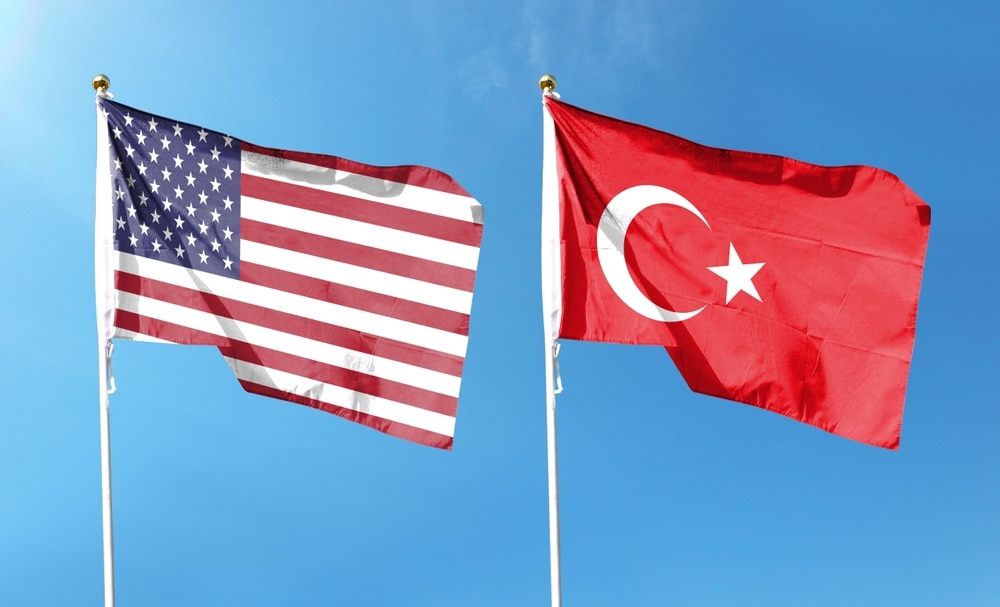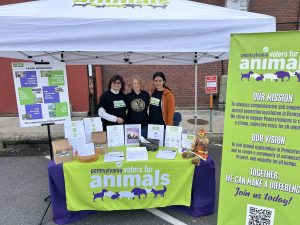Here I was, in one of the most well-known chocolate towns in the United States — Hershey, Pennsylvania. Every morning, the sweet aroma of chocolate filled the air, a signature of the town’s rich history. But on this particular day, the scent was the last thing on my mind. I was at Hershey Medical Center with my husband, anxiously awaiting the arrival of our little miracle. My emotions were a whirlwind of excitement, fear, joy, and anxiety all collided like a winter storm in my mind.
It was December 2, and the first snow of the winter was gently falling over Hershey. As I watched through the hospital window, my thoughts raced. I had read countless books on motherhood and baby care, but nothing could truly prepare me for this moment. I had cared for my nephews before, but this was different — this was my child.
Throughout my pregnancy, I had periodic doctor visits to monitor my baby’s heart. Now, the moment had arrived. Suddenly, I found myself in tears as my doctor entered the room. “We need to perform a C-section,” she told me. Within moments, I was being prepped for surgery. My heart pounded as I saw my husband beside me, offering silent support. And then, shortly after, our beautiful Mary was born. The instant I laid eyes on her, an emotion I had never experienced before overwhelmed me. Tears streamed down my face. I was a mother.
Two years later, on a warm summer day, I found myself in the same hospital once again. This time, however, I knew what to expect. I was prepared for another C-section, this time for our son. My husband and I waited together, and I even walked to the operating room with my nurse, feeling a sense of calm familiarity. Within minutes, as my husband and I exchanged a few words, our little miracle Noah entered the world. Once again, we held hands, crying tears of joy as they placed our son in my arms. I was now a mother of two.
But with this joy came a new challenge: How would we raise our children with two beautiful yet distinct identities and cultures? How would we ensure they embraced both their American and Turkish heritage?
We knew it wouldn’t be easy. Parenting is already a demanding journey, but raising children between two cultures adds an extra layer of complexity. There were nights when my husband and I questioned whether we were making the right choices. Were we doing enough? Were we making mistakes? And yet, there were also moments when we felt immense pride, knowing we had given our children the gift of two worlds.
From the very beginning, we made a conscious decision to speak our native language, Turkish, at home. We knew they would learn English effortlessly in school, but we wanted to ensure they remained connected to their roots. Every summer, we took them to Türkiye so they could experience the culture firsthand, spend time with family, and strengthen their language skills. Our home was filled with both Turkish and English books, and we read to them in both languages. At home, Turkish was our primary language, but when we had American guests, we naturally switched to English.
We also made a point to stay connected with the local Turkish community. Through these connections, our children not only practiced their language skills but also gained a deeper understanding of their cultural heritage. At the same time, we welcomed their American friends into our home for playdates, ensuring they never felt isolated or different from their peers. We taught them that being bilingual and bicultural was not a challenge but a privilege—something that made them unique and enriched their lives.
As the years passed, we watched with pride as our children formed friendships with peers from diverse cultural backgrounds. They embraced differences with curiosity and understanding, often knowing more about global cultures and religions than we did.
Now, our Mary is at Penn State University, and Noah is a high school senior, soon to follow in her footsteps. Looking back, we realize that while the journey was far from easy, it was deeply rewarding. There were challenges, doubts, and lessons learned along the way, but we wouldn’t have done it any other way.
Parenting between two cultures is not without its struggles, but it is also an opportunity to raise children who are open-minded, adaptable, and proud of their heritage. And as we see our children stepping confidently into the world, we know that every effort was worth it — despite the challenges.
I remember a particular middle school incident that left my daughter, Mary, feeling upset. One afternoon, she came home looking discouraged. When I asked her what was wrong, she explained that her friends had made fun of her lunch. That day, she had brought sarma—stuffed grape leaves—a dish she absolutely loved. However, some of her classmates questioned how she could eat something that looked so unfamiliar to them. Their comments left her feeling disappointed and frustrated.
I reassured her, saying, “They don’t know what they’re missing! You love this dish, and that’s all that matters.” We talked about how different cultures have unique foods, and sometimes, people judge what they don’t understand. Instead of feeling embarrassed, I encouraged her to be proud of her heritage. The following week, she decided to bring extra sarma to school and share it with her curious friends. To her delight, some of them tried it and even liked it! It was a small but meaningful moment of cultural exchange, showing that sometimes, all it takes is an open mind — and a good meal — to build understanding.
READ: Bucks County Must Be More Inclusive with Its Muslim Community
Another significant moment in our journey came during the 2016 U.S. presidential election. The night of the election, our home was unusually quiet. Mary and Noah, like many others, were unsettled by the results. The next day at school, something unexpected happened: several of their friends approached them and gave them hugs. One of them even told Mary, “I was so worried about you last night.”
Later that day, we received a phone call from a concerned parent. She told us that her son had been crying the night before, fearing that our family would be deported. He had heard political rhetoric suggesting that immigrants would be forced to leave, and in his young mind, he assumed that meant his friends Mary and Noah might have to go.
What struck me most was the compassion these children showed. Though they were young, they instinctively understood the importance of standing by their friends. It was a reminder that even in times of uncertainty, empathy and kindness can shine through.
Beyond these experiences, we also made a conscious effort to actively engage our children in cultural activities. In our town, we helped organize Turkish Cultural Nights, where we showcased traditional music, dance, and cuisine. These events were not just for the Turkish community, but were open to everyone. Our children played an active role, helping to prepare food, setting up booths, and inviting their American friends to attend. Through these experiences, they didn’t just learn about their own culture—they also learned how to share it with others.
One of my favorite memories was watching Noah proudly introduce baklava and Turkish tea to his classmates. At first, some were hesitant, unsure about the unfamiliar flavors. But after taking a bite, many of them loved it. More importantly, they gained a newfound appreciation for a culture they hadn’t known much about before.
Looking back, these moments, both the struggles and the triumphs, shaped my children into who they are today. They learned that cultural differences should be embraced, not hidden. They discovered the power of patience, resilience, and education in breaking down stereotypes. And most importantly, they realized that being part of two cultures is not a challenge to overcome, but a privilege to celebrate.
We have always loved celebrating Thanksgiving. Our children experienced it for the first time with our wonderful American friends, and we truly enjoyed embracing the tradition and learning about its significance. Over time, it became a cherished tradition in our home. Now, every year, we celebrate Thanksgiving twice—once with our Turkish friends a week before Thanksgiving and again on Thanksgiving Day with our American friends. If you ask my children about Thanksgiving, they will have plenty to share!
Similarly, we also embrace the Christmas holiday. We invite our friends over for dinner and enjoy the festive spirit together. When people ask, “Do you celebrate Christmas?” my answer is always yes—at our home, we do! While Christmas is not part of Islam, I believe in respecting and celebrating the traditions of my friends. I have taught my children the same values of inclusivity and respect. Saying “Happy Holidays” or “Merry Christmas” to our friends does not mean we are leaving our faith. In fact, our Prophet engaged in meaningful dialogue with religious leaders of other faiths and treated them with respect. We strive to model that same spirit of understanding and appreciation for our children.
Lastly, I would like to touch on the role of religion in our journey of raising children between two cultures. As a Muslim family, we have always taught our children that, above all, we are human first. Our primary goal has been to instill in them a deep sense of respect for all people, regardless of their background, beliefs, or traditions. While we introduced them to the principles of Islam, we also emphasized the importance of kindness, understanding, and coexistence.
If you were to ask my children what their favorite aspects of Islam are, they would likely say Ramadan and Eid. These times of the year brought a special sense of togetherness, reflection, and joy into our home. During Ramadan, we fasted as a family and invited friends over almost every evening for iftar, the meal to break the fast. My children absolutely loved these gatherings. The sense of community, the anticipation of sunset, and the warmth of having guests around made Ramadan an exciting and cherished time for them.
They first began fasting around third or fourth grade, and I remember receiving many questions from their teachers and classmates. Some were concerned, wondering if fasting at such a young age was appropriate. But we never forced them—they were simply eager to participate. They saw fasting not as a burden, but as a meaningful tradition they wanted to be a part of. They took pride in helping set the table, welcoming guests, and experiencing the spiritual and communal aspects of Ramadan. In fact, on the rare days when we didn’t have guests over, they would express their disappointment, insisting that our home should always be filled with people during this special time.
Through these experiences, our children not only embraced their faith but also learned the beauty of hospitality, gratitude, and generosity. At the same time, they grew up respecting and appreciating different religions and traditions, understanding that diversity is something to celebrate.
As I reflect on our journey, I realize that raising children with two identities is about finding balance—between cultures, languages, and values. It is about embracing the richness of both worlds and allowing our children to grow into individuals who are confident in who they are, yet open to learning from others. It wasn’t always easy, but seeing the compassionate, open-minded, and culturally aware individuals they have become, I know that every effort was worth it.
Raising children between two cultures and identities has been a journey filled with challenges, learning experiences, and moments of deep pride. From navigating language barriers and cultural differences to fostering religious understanding and inclusivity, every step required patience, adaptability, and a commitment to balancing both worlds.
Looking back, I see how these experiences shaped my children into the individuals they are today—open-minded, compassionate, and confident in their dual identity. They have learned to embrace their heritage while appreciating and respecting the diversity around them. They have found strength in their differences and discovered that being part of two cultures is not a struggle, but a privilege.
As parents, we often wonder if we made the right choices, but seeing our children thrive reassures us that the effort was worthwhile. The goal was never to make them choose between two cultures, but to help them understand that they belong to both. And now, as they step into the world as young adults, I am certain that they carry the best of both identities with them—proud of where they come from and ready to embrace whatever the future holds.






